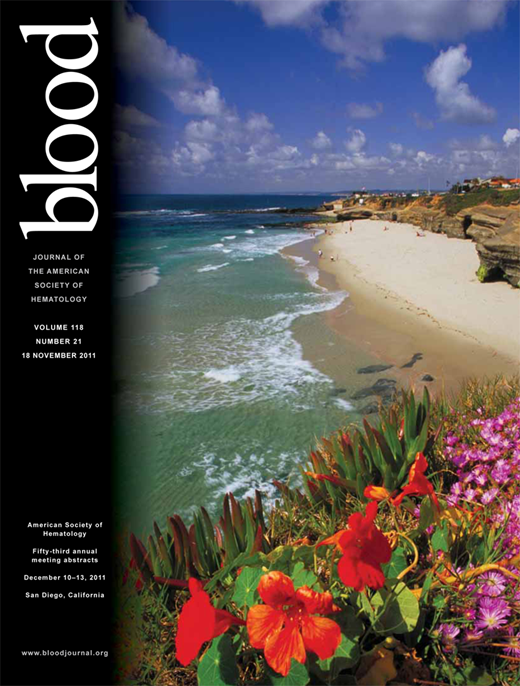Abstract
Abstract 4519
Diffuse large B-cell lymphoma (DLBCL) remains one of the most frequently seen non-Hodgkin lymphoma (NHL) with an aggressive disease course. It estimates that only 40–50% of patients (pts) may be cured with chemo - and radiotherapy; the remaining pts subset remains partially chemosensitive or resistant. High dose chemotherapy (HDT) followed by autologous haematopoietic stem cell transplantation (AHSCT) is a method of choice for the pts who didn’t achieve complete remission (CR) after R-CHOP or CHOP treatment.
We present 80 pts with DLBCL (47 male and 33 female, with a median age of 52. (range 18–68 yrs) who were underwent AHSCT between January 1999 and April 2011 in our Department. Ann Arbor staging at diagnosis was as follows: II- (n=11), III- (n=17), IV- (n=32); 48 of pts manifested B-symptoms. 50 of pts had an aged-adjusted IPI 2 or 3, 8 pts - IPI 4. Clinical manifestation at diagnosis included: hepatomegaly (n=16), splenomegaly (n=19), enlargement of the lymph nodes (n=39), bone marrow infiltration (n=7), lung infiltrates (n=5), digestive system involvement (n=9), CNS (n=4), tonsils (n=3). Initially, all were treated CHOP but 65 of them received chemotherapy with rituximab and achieved partial response (PR) which was defined as the reduction of measurable disease by ≥50% without the appearance of any new lesions. Patients with PR proceeded to high dose chemotherapy (HDT) followed by AHSCT.
Stem cells were collected from peripheral blood after IVE chemotherapy (IVE – ifosfamide 3g/m2 iv in 1–3d, etoposide, epirubicine 50mg iv in1d) in 67 patients, in 9 with other treatment and subsequent administration of granulocyte-colony stimulating factor (G-CSF) at a dose of 10ug/kg/d, starting from +5 day of chemotherapy till the last day of collection. G-CSF alone (10ug/kg/d) was used in 4 remaining patients. Collections were performed using Optia Spectra. All patients collected the sufficient number of CD34+ cells for AHSCT procedure. Conditioning regimens preceeding AHSCT consisted of CBV in 73 cases, BEAM in 6 and LACE in one. A median number of transplanted CD34+ cells was 3,97 (1.25 – 35.76×10^6/kg). All patient successfully engrafted. Hematopoietic recovery was as following: WBC count > 1,0×10^9/L after median of 12 days (range 8–16 days),ANC> 0,5×10^9/L after median of 14 days (range 8–17 days) and platelet count >20×10^9/L after median of 14 days (range 7–21 days). None of pts die due to AHSCT (TRM 0%). The major complications after AHSCT were rare and included: bacterial infections of the respiratory tract (n=15), viral infections (n=10), oral mucositis (n=9). 145 months’ disease free survival (DSF) was estimated to be 88% with a 145 months’ overall survival of 86%.
69 patients achieved CR after AHSCT (86,3%). Six pts underwent second AHSCT and 4 of them achieved CR. At the last contact, 75 pts are alive with a median follow-up period of 56 months (range 3–145). 5 patients died due to disease progression.
HDT followed by AHSCT seems to be highly effective and safe procedure for DLBCL patients.
No relevant conflicts of interest to declare.
Author notes
Asterisk with author names denotes non-ASH members.

